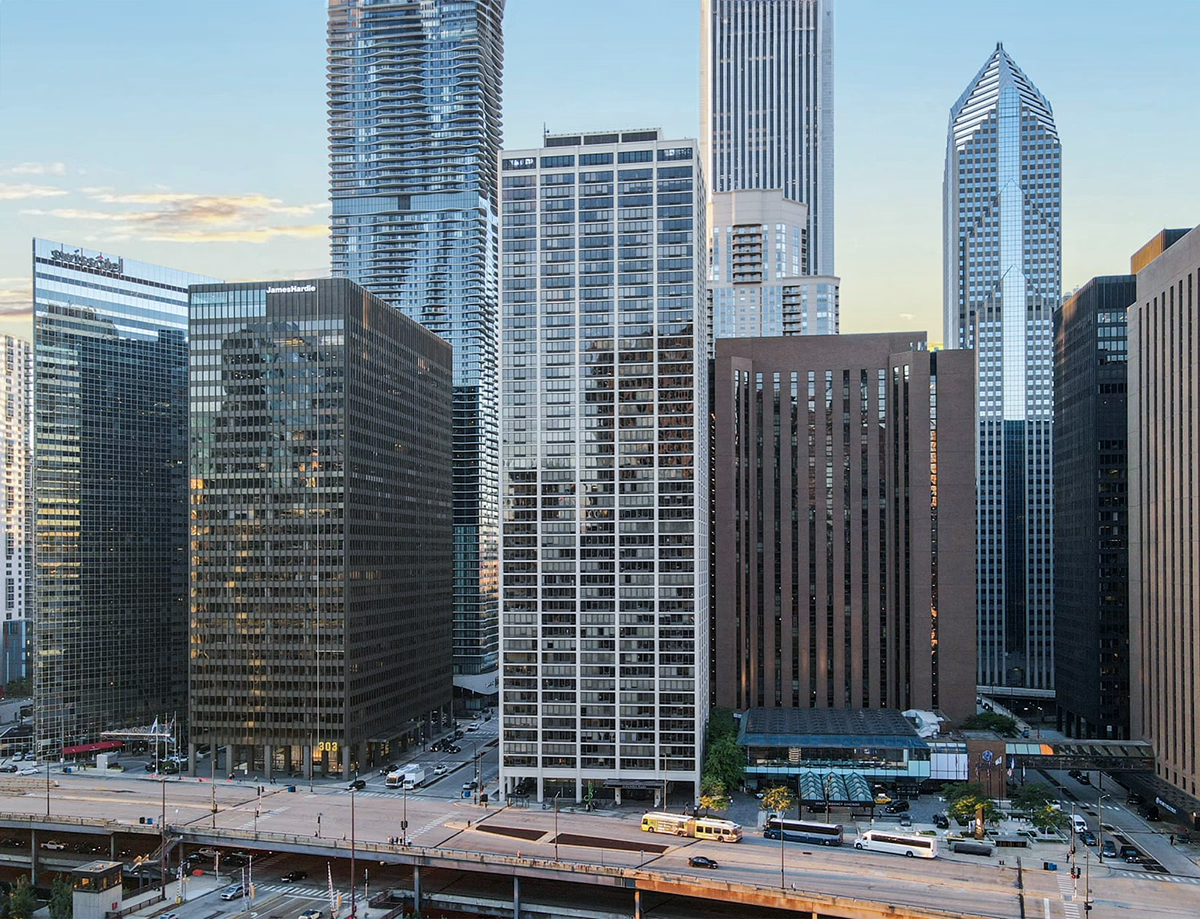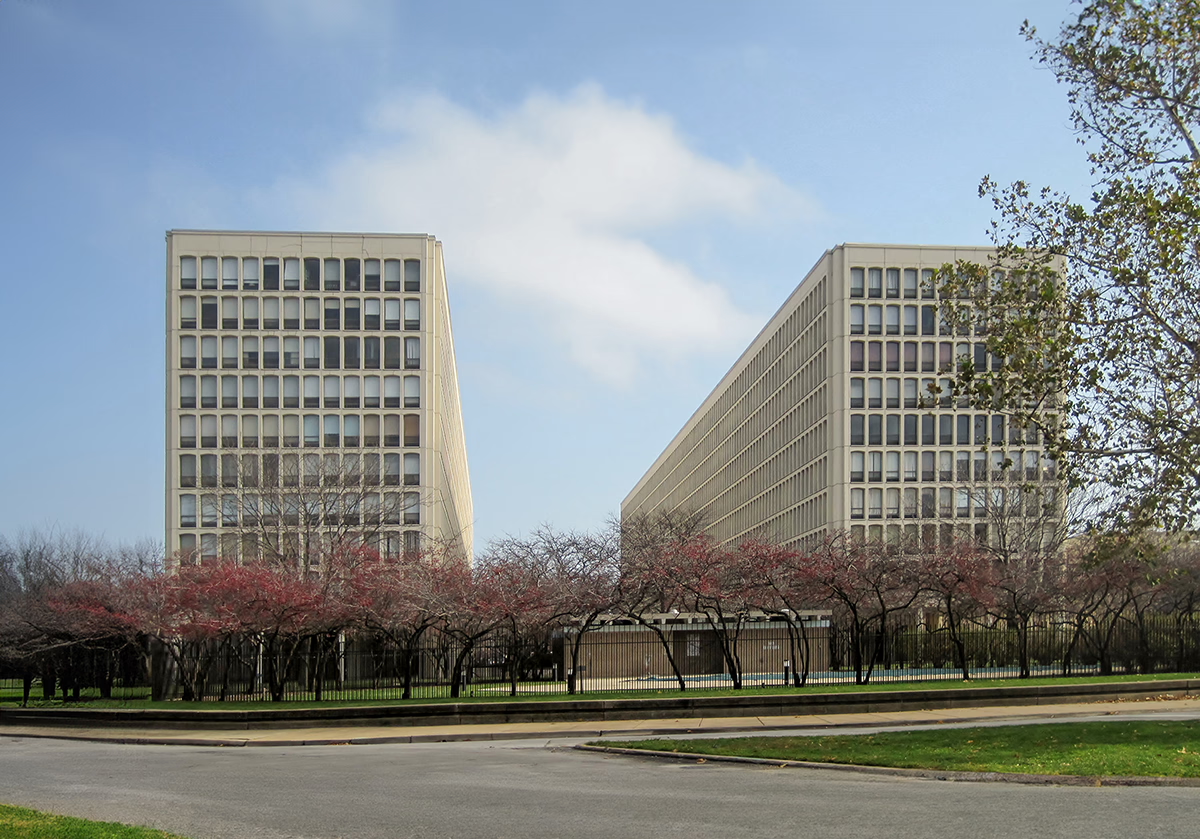Columbus Plaza vs University Apartments


Comparing the Columbus Plaza and the University Apartments is interesting because they both rise in Chicago, IL, yet they were conceived by two different design teams, Fujikawa Conterato Lohan and Associates and I. M. Pei, and were completed at different points in time. They were finished more than a decade apart.
This contrast within the same city allows us to see how different creative minds interpreted the evolving needs of Chicago across time.
Let's take a closer look!
Height & Size
The Columbus Plaza is clearly the larger tower of the two, both in terms of height and number of floors. It rises to 469ft (143m) with 47 floors above ground, while the University Apartments reaches 308ft (94m) with 10 floors above ground.
Of course, each project may have faced different briefs or regulatory constraints, which we don't really know about and could also explain the outcome.
Architectural Style
Both the Columbus Plaza and the University Apartments were designed in line with the aesthetic conventions of the International Style style.
The Columbus Plaza was designed at a moment when the International Style style was already in decline, making it more of a lingering expression of the movement. In contrast, the University Apartments style was already in decline, making it more of a lingering expression of the movement. In contrast, the University Apartments was built when the style still carried greater cultural weight.
Uses
Both the Columbus Plaza and the University Apartments were designed to serve as residential towers, and that has remained their main use since their completion, serving similar roles in the urban fabric.
In terms of capacity, the Columbus Plaza offers 533 apartments, while the University Apartments provides 540 units.
The University Apartments also provides 220 parking spaces.
Structure & Facade
Both the Columbus Plaza and the University Apartments rely on a Frame structural system.
A frame structure uses a grid of columns and beams to carry the building's loads. This frees the walls from structural duties, allowing for flexible floor plans and larger windows.
They also employ the same type of facade, a Window Wall facade.
A window wall system is installed between floor slabs. It is simpler and faster to build than curtain walls, but exposes slab edges and requires careful detailing to avoid thermal bridges.
| Columbus Plaza | University Apartments | |
|---|---|---|
| Fujikawa Conterato Lohan and Associates | Architect | I. M. Pei |
| 1978 | Construction Started | 1959 |
| 1980 | Year Completed | 1961 |
| International Style | Architectural Style | International Style |
| Residential | Current Use | Residential |
| 47 | Floors Above Ground | 10 |
| 143 m | Height (m) | 94 m |
| 533 | Residential Units | 540 |
| Frame | Structure Type | Frame |
| Cast In Place Concrete | Vertical Structure Material | Concrete |
| Cast In Place Concrete | Horizontal Structure Material | Concrete |
| Yes | Facade Structural? | Yes |
| Concrete, Glass | Main Facade Material | Glass, Concrete |
| Alfred Benesch & Company | Structural Engineer | August Komendant |
| IL | State | IL |
| Chicago | City | Chicago |
| 233 East Wacker Drive | Address | 1400 1451 E.55th Street |